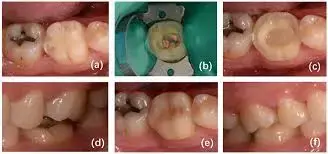- Home
- Medical news & Guidelines
- Anesthesiology
- Cardiology and CTVS
- Critical Care
- Dentistry
- Dermatology
- Diabetes and Endocrinology
- ENT
- Gastroenterology
- Medicine
- Nephrology
- Neurology
- Obstretics-Gynaecology
- Oncology
- Ophthalmology
- Orthopaedics
- Pediatrics-Neonatology
- Psychiatry
- Pulmonology
- Radiology
- Surgery
- Urology
- Laboratory Medicine
- Diet
- Nursing
- Paramedical
- Physiotherapy
- Health news
- Fact Check
- Bone Health Fact Check
- Brain Health Fact Check
- Cancer Related Fact Check
- Child Care Fact Check
- Dental and oral health fact check
- Diabetes and metabolic health fact check
- Diet and Nutrition Fact Check
- Eye and ENT Care Fact Check
- Fitness fact check
- Gut health fact check
- Heart health fact check
- Kidney health fact check
- Medical education fact check
- Men's health fact check
- Respiratory fact check
- Skin and hair care fact check
- Vaccine and Immunization fact check
- Women's health fact check
- AYUSH
- State News
- Andaman and Nicobar Islands
- Andhra Pradesh
- Arunachal Pradesh
- Assam
- Bihar
- Chandigarh
- Chattisgarh
- Dadra and Nagar Haveli
- Daman and Diu
- Delhi
- Goa
- Gujarat
- Haryana
- Himachal Pradesh
- Jammu & Kashmir
- Jharkhand
- Karnataka
- Kerala
- Ladakh
- Lakshadweep
- Madhya Pradesh
- Maharashtra
- Manipur
- Meghalaya
- Mizoram
- Nagaland
- Odisha
- Puducherry
- Punjab
- Rajasthan
- Sikkim
- Tamil Nadu
- Telangana
- Tripura
- Uttar Pradesh
- Uttrakhand
- West Bengal
- Medical Education
- Industry
Ceramic chairside-fabricated endo crowns of various materials effectively restore endodontically treated molars and premolars: Study

Ceramic chairside-fabricated endocrowns effectively restore endodontically treated molars and premolars regardless of the material used suggests a study published in the Journal of Dentistry.
Endocrowns can be fabricated from various materials as a treatment option for endodontically treated teeth. This mixed cohort study aimed to demonstrate the clinical efficacy of endocrowns made of feldspathic, zirconia lithium silicate, and lithium disilicate ceramics using a chairside CAD/CAM system. The present study compared the clinical outcomes of 141 endocrown restorations in posterior teeth of 85 patients in a two-year follow-up. The efficacy of restorations was evaluated in three aspects: esthetics, biological response, and function, with the aid of the FDI guideline, and presented as descriptive analyses. Additionally, the data were analyzed using Chi-square and Spearman correlation tests.
The significance level was set at p = 0.05. Results: The study findings revealed that the type of restorations (feldspathic, zirconia lithium silicate, and lithium disilicate) (p > 0.05) and underlying teeth (molars and premolars) (p > 0.05) play no part in restorations’ failure. Caries' recurrence is primarily responsible for the failure of the endocrowns. Secondary caries and radiolucency were observed in four teeth (2.83%). The clinical efficacy of 126 restorations (89.36%) fell into the category of “clinically excellent” and “clinically good.” Ten restorations (7.09%) were classified as “clinically sufficient/satisfactory,” and only five restorations (3.54%) needed replacement due to having “clinically unsatisfactory” and “clinically poor” quality. With endocrowns made of the mentioned ceramics showing a high success rate and durability in the short term, they can be considered a safe choice for restoring endodontically treated teeth. It is worth noting that caries were the most common reason for the failure of the restorations. Endocrowns made of different ceramics have been proven reliable restorations for endodontically treated molars and premolars.
Reference:
Samar Jalali, Nafise Asgari, Parsa Pirooz, Shima Younespour, Faezeh Atri,Comparison of Clinical Efficacy of CAD/CAM Endocrowns Made of Feldspathic, Zirconia Lithium Silicate, and Lithium Disilicate: A Two-year Mixed Cohort Study. Journal of Dentistry,2024. 105019. ISSN 0300-5712. https://doi.org/10.1016/j.jdent.2024.105019.(https://www.sciencedirect.com/science/article/pii/S0300571224001891)
Dr. Shravani Dali has completed her BDS from Pravara institute of medical sciences, loni. Following which she extensively worked in the healthcare sector for 2+ years. She has been actively involved in writing blogs in field of health and wellness. Currently she is pursuing her Masters of public health-health administration from Tata institute of social sciences. She can be contacted at editorial@medicaldialogues.in.
Dr Kamal Kant Kohli-MBBS, DTCD- a chest specialist with more than 30 years of practice and a flair for writing clinical articles, Dr Kamal Kant Kohli joined Medical Dialogues as a Chief Editor of Medical News. Besides writing articles, as an editor, he proofreads and verifies all the medical content published on Medical Dialogues including those coming from journals, studies,medical conferences,guidelines etc. Email: drkohli@medicaldialogues.in. Contact no. 011-43720751


